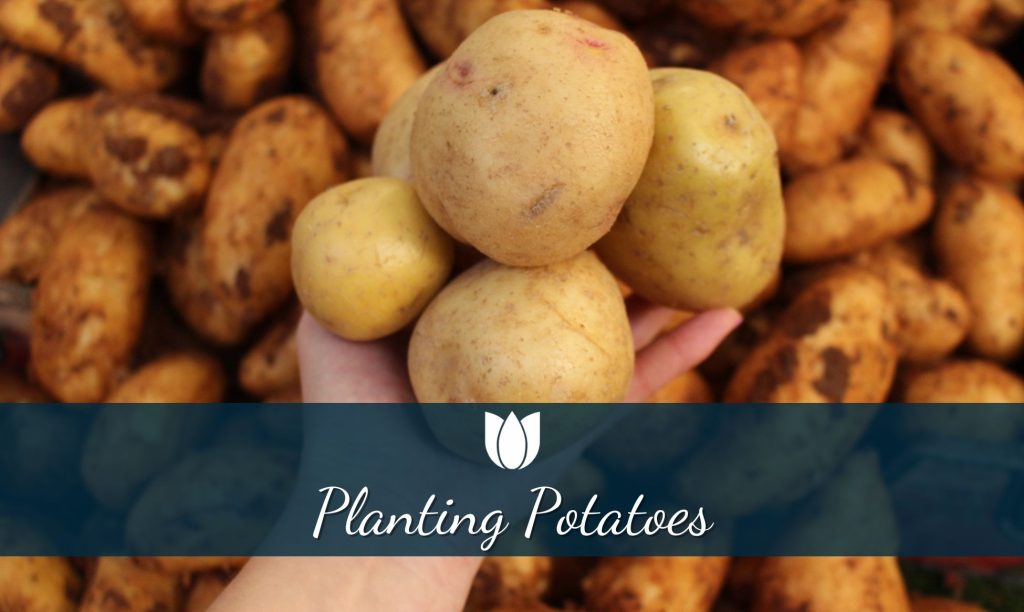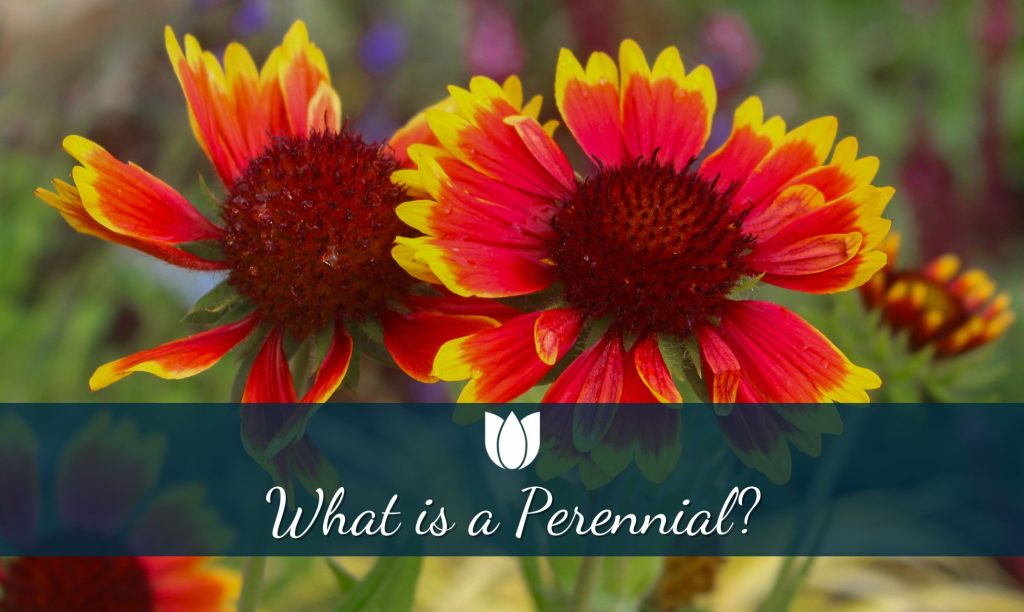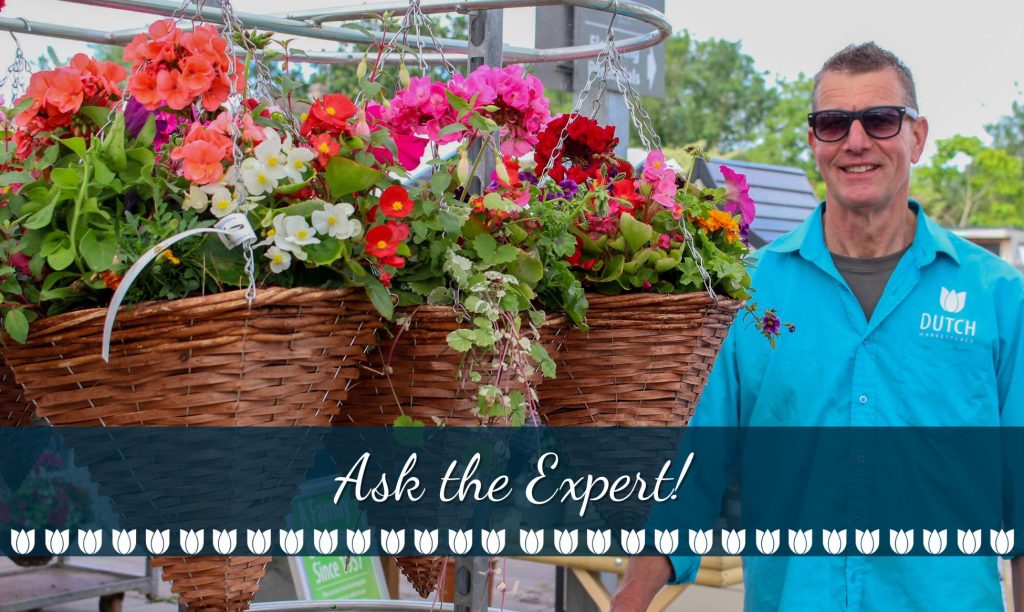Join Our Team at The Dutch – We’re Hiring! 🌿☕ We’re on the lookout for two enthusiastic new team members to join our staff! 🌟 Kitchen Assistant – Part-Time (3 Days/Week) Do you love being part of a fast-paced team and have a passion for good food and friendly service? We’re looking for a reliable, […]
What is a Perennial? A hardy perennial is a garden staple that will come back year after year, making it a fantastic investment for any outdoor space. While their foliage may die down in winter, they’re not gone for good! Around March, fresh stems will start to emerge from the ground, and as the weather […]
Hydrangea: One of Our Best Sellers! Hydrangeas are a fantastic addition to any garden, whether in pots or borders, thanks to their versatility and long-lasting blooms. These lovely plants are happy in both sun and shade, making them an excellent choice for a variety of garden settings. For those with blue Hydrangeas, remember to plant […]
Gardening Q&A with Alex! We asked you on our social media channels, if you had any gardening questions for Alex. You certainly did! to Follow us on Instagram to see Alex answer these questions, or have a read of his answers below! Which plants should I be deadheading and which should I leave? “Deadheading is […]
Finding the right plants for shady parts of your garden can be a challenge, but with Alex’s expert guidance, you’ll discover a variety of beautiful, easy-care plants that thrive without direct sunlight. Whether you have a shaded border, a spot near a water feature, or just a shady corner that needs some greenery, these shade-loving […]
Tomatoes are the crown jewel of many home gardens, and with the right care, you can enjoy a summer filled with juicy, homegrown tomatoes straight from the vine. In this comprehensive care guide, we’ll walk you through everything you need to know to cultivate thriving tomato plants and harvest a bumper crop of delicious fruits. […]
Have you ever imagined plucking ripe, juicy fruits straight from your own backbgarden? With Alex’s expert care guide, turning this dream into reality is easier than ever! Whether you’re craving crisp apples, succulent pears, sweet plums, or tart cherries, there’s a fruit tree variety for you. Potting Your Fruit Tree Begin by potting your dwarf fruit […]
Welcome to our guide on planting potatoes, where we’ll walk you through the steps to grow your own delicious spuds right in your backyard. Whether you’re a seasoned gardener or just starting out, potatoes are a rewarding crop to cultivate. And the best part? You can find all the supplies you need, from seed potatoes […]
Events by Month
Alex’s Guide to Shade-Loving Plants for Your Garden!
Finding the right plants for shady parts of your garden can be a challenge, but with Alex’s expert guidance, you’ll discover a variety of beautiful, easy-care plants that thrive without direct sunlight. Whether you have a shaded border, a spot near a water feature, or just a shady corner that needs some greenery, these shade-loving plants are perfect for adding colour and life to those areas.
Astrantia
Astrantia is a fantastic choice for shady spots in your garden. Growing to about 60cm tall and forming a clump, this no-nonsense plant boasts stunningly unique flowers that add a touch of elegance. It’s easy to care for and perfect for flower borders or pots.
Hardy Fuchsia
If you’re looking for a plant that flowers profusely in the shade, the Hardy Fuchsia is a great option. These plants bloom all summer long and can tolerate the sun, but they really shine in the shade where other plants may not thrive.
Hardy Ferns
Hardy Ferns are known for their great foliage and come in many varieties. They are particularly well-suited for shady spots, especially near water features like ponds. Most ferns have evergreen foliage, providing year-round interest.
Hostas
Hostas are a favourite among gardeners, thanks to their vast range of colours and striking leaves. They are perfect for shady spots, though they do require some protection from slugs. The extra effort is worth it, as these plants add a splash of colour and texture to any garden.
Japanese Anemones
Japanese Anemones thrive in the shade and produce lots of beautiful flowers. They are versatile, growing well in both pots and garden borders. These plants add a delicate beauty to any shaded area.
Foxgloves
Foxgloves are bold, tall flowers that can tolerate sun but are just as happy in the shade. They are strong growers, ideal for pots or borders, and are excellent for attracting bees and butterflies to your garden.
Vinca (Periwinkle)
Vinca, also known as Periwinkle, is an evergreen plant with lovely blue flowers and variegated ground-covering leaves. It’s perfect for adding interest to shady borders and provides excellent ground cover.
Pachysandra
Pachysandra is another evergreen plant that thrives in the shade. It features little white flowers and provides excellent ground cover, making it ideal for shady spots in your garden.
Daphne
Daphne plants produce fragrant flowers in the spring, autumn, or late summer. They are a great addition to shady areas, adding both beauty and a delightful scent.
By incorporating these shade-loving plants into your garden, you can transform even the darkest corners into vibrant, colourful spaces. Visit our garden centre to explore these varieties and get expert advice from Alex and our team. Happy gardening🌿🌸

The Ultimate Tomato Plant Care Guide!
Tomatoes are the crown jewel of many home gardens, and with the right care, you can enjoy a summer filled with juicy, homegrown tomatoes straight from the vine. In this comprehensive care guide, we’ll walk you through everything you need to know to cultivate thriving tomato plants and harvest a bumper crop of delicious fruits.
Choosing the Right Container While tomato grow bags are a popular choice for planting tomatoes, it’s essential to select a deep-fill grow bag to provide ample space for root growth. Shallow bags can lead to root constriction and quick soil drying, which may hinder plant health and productivity. Alternatively, opt for a generously sized pot to ensure optimal root development and moisture retention.
Selecting the Right Soil When planting your tomato plants, consider using the contents of a tomato grow bag specifically formulated for tomatoes. This nutrient-rich soil blend provides your plants with all the essential nutrients they need to thrive throughout the growing season, resulting in robust growth and abundant fruit production.
Sunlight Requirements Tomatoes thrive in sunny conditions, so be sure to provide your plants with plenty of sunlight to promote healthy growth and fruit ripening. While tomatoes prefer full sun exposure, they can tolerate some shade, making them versatile additions to any garden or patio.
Watering and Feeding Maintain consistent moisture levels in the soil by incorporating tomato feed into your watering regimen. This specialized fertilizer provides your plants with essential nutrients, ensuring vigorous growth and optimal fruit development. Water your tomato plants regularly, especially during hot weather, to prevent soil dryness and promote healthy root systems.
Harvesting Your Tomatoes As your tomato plants mature, keep a close eye on the ripening fruit. Harvest your tomatoes when they reach their desired ripeness, whether it’s firm and green for cooking or plump and juicy for fresh eating. With proper care and attention, your tomato plants will reward you with a bounty of flavourful fruits throughout the summer months.
With the tips outlined in this guide, you’ll be well-equipped to cultivate thriving tomato plants and enjoy a plentiful harvest of homegrown tomatoes all summer long. From selecting the right container to providing adequate sunlight and nutrition, every step plays a crucial role in ensuring the success of your tomato crop. So roll up your sleeves, dig in the dirt, and get ready to enjoy the sweet taste of success with your homegrown tomatoes!

Guide to Fruit Trees:
Have you ever imagined plucking ripe, juicy fruits straight from your own backbgarden? With Alex’s expert care guide, turning this dream into reality is easier than ever! Whether you’re craving crisp apples, succulent pears, sweet plums, or tart cherries, there’s a fruit tree variety for you.
Potting Your Fruit Tree Begin by potting your dwarf fruit tree into a spacious container filled with high-quality multi-purpose compost. Ensure the container has adequate drainage to prevent waterlogging.
Watering and Feeding Water your fruit tree once or twice a week, especially during hot weather, to keep the soil consistently moist but not waterlogged. Additionally, incorporate a tomato food fertilizer into your watering routine to provide essential nutrients for healthy growth and bountiful fruit production.
Sunlight Requirements Position your fruit tree in a sunny spot where it can bask in at least half a day of sunlight. Fruit trees thrive in sunny conditions, which promote robust growth and abundant fruiting.
Enjoy Fresh Fruits With proper care, your fruit tree will reward you with a plentiful harvest of fresh, homegrown fruits all summer long. Depending on the variety, you may even enjoy your first harvest as early as this year, with many more fruitful seasons to come.
Embrace the joy of growing your own fruits and savour the satisfaction of harvesting nature’s bounty from your own back garden. Visit us instore and our team of plant experts, who will be happy to help you every step of the way!
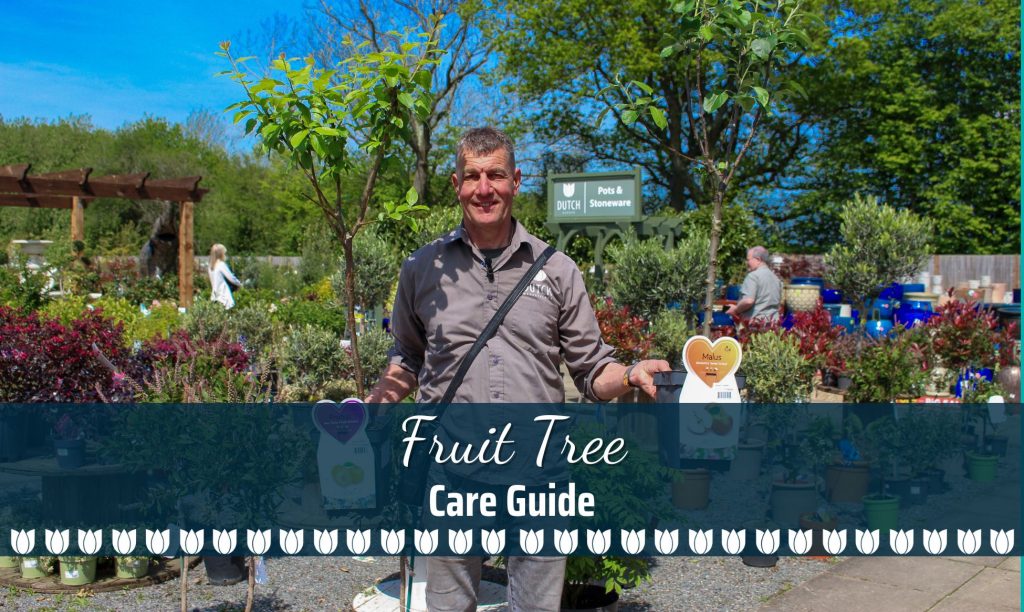
May Gardening Tips:
May Gardening Tips: How to Cultivate a Vibrant Spring Garden
As the weather warms and nature bursts into life, it’s time to roll up your sleeves and dive into your garden! Here are some essential gardening tips for May to ensure your garden flourishes throughout the season:
Beware of Late Frosts: Keep an eye on the weather forecast and protect tender plants and vegetables from late frosts by covering them with fleece or cloches.
Support Climbers: Tie in the new shoots of climbing roses and summer clematis to encourage them to grow in the desired direction.
Prune Spring-Flowering Shrubs: If necessary, prune shrubs that have finished flowering in late winter or early spring to maintain their shape and promote healthy growth.
Feed Container Plants: Start liquid feeding pots and containers to provide essential nutrients for strong summer blooms and healthy growth.
Mind Nesting Birds: Before pruning hedges or large bushes, check for nesting birds to avoid disturbing their habitat.
Lawn Care: Mow lawns if they’re not waterlogged, but consider leaving some areas uncut to provide habitats for wildlife or mow less frequently to allow wildflowers to bloom for pollinators.
Pest Control: With the warmer weather, be vigilant for pests and take early action to prevent infestations using sprays or other control methods.
Weed Management: Keep on top of weeding to prevent weeds from competing with your plants for nutrients and water.
Plant Out Vegetable Seedlings: Plant out early vegetable seedlings in warm ground, but remember to protect them from frost if temperatures drop.
Greenhouse Ventilation: Open greenhouse vents on sunny days to prevent humidity build-up and promote air circulation.
Deadheading: Remove spent flowers from spring-flowering bulbs, but leave the foliage to die down naturally to nourish the bulbs for next year.
Protect Soft Fruit: Protect soft fruit plants with netting to deter birds from pecking at buds and ripening fruit.
Discover New Varieties: Keep an eye out for new plant varieties showcased at events like the Chelsea Flower Show (21st – 24th May) for inspiration and ideas to enhance your garden.
With these tips in mind, your garden will be bursting with colour and vitality, providing you with a beautiful outdoor sanctuary to enjoy throughout the spring and beyond. Remember to pop in and speak to on of our plant experts for personalised advice about how to make the most of your garden. Happy gardening!

Summer Bulbs:
Spring has arrived, and our daffodils are painting the landscape with vibrant hues. But why stop there? Keep the beauty blooming by embracing the allure of summer bulbs!
March and April mark the perfect time to plant summer bulbs in tubs and borders. These gems will dazzle your garden all summer long, promising a delightful display year after year.
Save both time and money! Planting bulbs now is a more cost-effective option compared to purchasing flowering plants later in the summer.
At the Dutch, we offer an exquisite selection of summer bulbs, including Dahlia, Crocosmia, Ranunculus, Anemone, Echinacea, and Lilium. And here’s the cherry on top: Mix and match any three packs for just £12!
Do something today your future self will thank you for. Visit us today and start your journey to a blooming paradise!
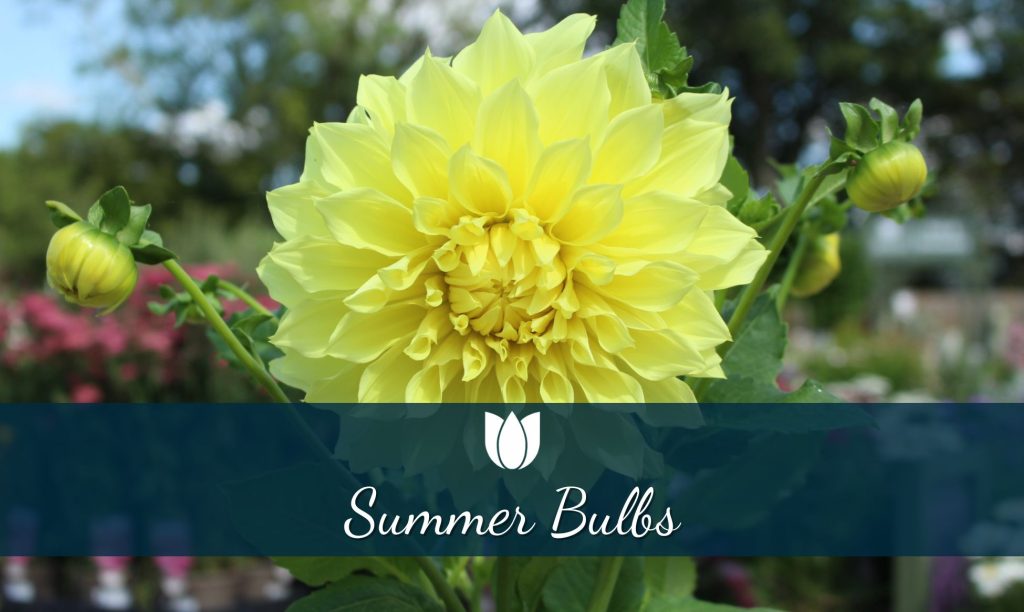
Potato Guide:
Welcome to our guide on planting potatoes, where we’ll walk you through the steps to grow your own delicious spuds right in your backyard. Whether you’re a seasoned gardener or just starting out, potatoes are a rewarding crop to cultivate. And the best part? You can find all the supplies you need, from seed potatoes to soil, right here at the Dutch. Let’s dig in and get those potatoes in the ground!
- Choosing the right potato.
For fresh new potatoes, choose first and second earlies. For perfect roast potatoes, go for maincrop varieties. To enjoy buttery spuds all winter, plant second croppers from June to late July.
2. Chitting your potatoes.
Begin chitting your seed potatoes a few weeks ahead of planting to allow shoots to emerge. Do this by placing your seed potatoes in a cool, well-lit place with no risk of frost.
3. Planting your Potatoes
Plant before chits grow too long, in rich, fertile soil with good drainage. You can easily plant potatoes in your vegetable patch or a container from mid-March onwards.
4. Care for your potatoes
Keep the soil well watered and expect shoots in about three to four weeks, or sooner in warmer soil. Once shoots emerge, gently cover them with more soil to protect shallow tubers from the sunlight.
5. Harvest your potatoes!
The first earlies should be ready to dig up 8 – 12 weeks after planting, and the second earlies should be ready a few weeks after that! Maincrop Potatoes will be ready to harvest once the foliage begins to die back naturally.
With these simple steps, you’re well on your way to harvesting your own homegrown potatoes. Whether you’re dreaming of creamy mashed potatoes, crispy roasted wedges, or hearty potato soup, there’s nothing quite like the taste of freshly dug spuds from your own garden. If you still would like help or advice, our friendly team of experts at the Dutch would be happy to help. Happy planting!
